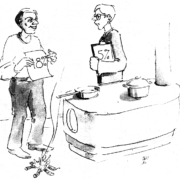Learning From The Field, Part 2
The Field Informs the Lab
In Part 1, we gave examples of how field studies can provide unpleasantly surprising results. Rocket stoves were designed to make a little less smoke and use substantially less fuel. So when the rocket stove was field tested by USAID the inventor, Dr. Larry Winiarski, was not surprised that the stove still made smoke. But the ARC team was surprised that it was not a real improvement over the open fire.
In 2011 the goals for cookstoves published by the Department of Energy asked that a stove use 50% less fuel and make 90% less PM2.5 to protect health when used indoors. Now in 2022 stoves are also supposed to address climate change, which means emitting less PM2.5 and hopefully making less than 8% black carbon. Field tests show that we need to make more improvements to meet these specific goals.
How are these reductions achieved in the lab?
- Use a chimney to reduce in-home concentrations of CO and PM2.5.
- In lab tests, approximately 850°C gases need to flow in tight channel gaps around the pot(s) to reduce the fuel used to cook by about 50%.
- Molecular mixing at 850°C (0.2 second residence time) can achieve something like a 90% reduction of PM2.5 (requires forced draft in a Rocket stove).
- This mixing reduces greenhouse gas emissions by about the same amount.
Natural-draft and forced-draft TLUD stoves burning pellets and forced draft Jet-Flame stoves burning dry sticks without bark get close to these reductions in the lab. Unfortunately, they frequently do not yet meet these goals in the field.
The lab has to move into the field to learn if current technology can accomplish modern goals. Let’s go!
Next week in Part 3: sometimes field tests show success.



Leave a Reply
Want to join the discussion?Feel free to contribute!